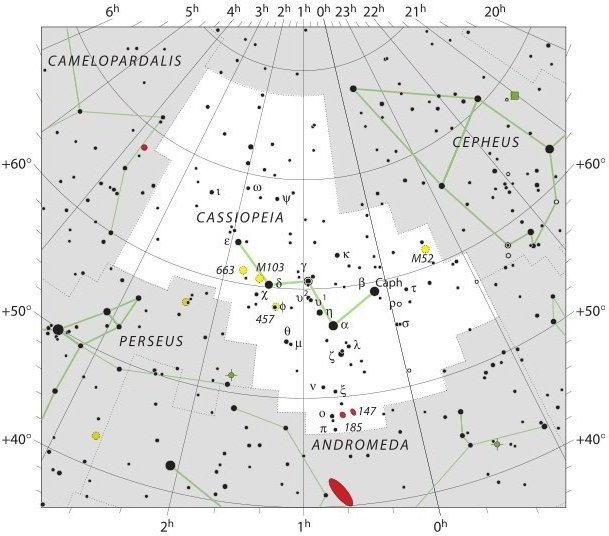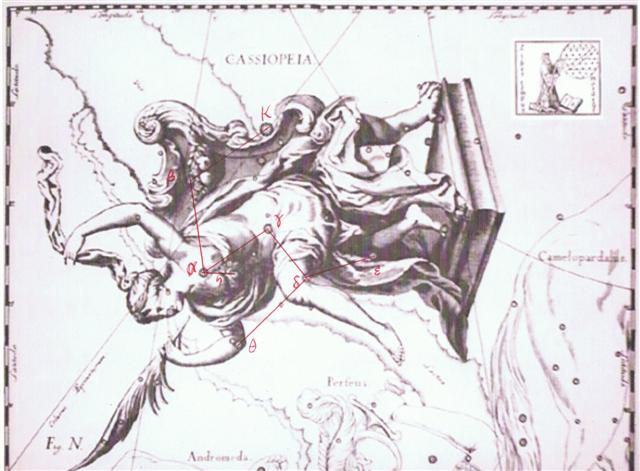|
584
26 The culmination dates (at 21h) were important. And from them the dates half a year away could then be determined: ... Allen has documented all his star culminations at 21h, which could be due to an effort of keeping the culminations at their proper places according to the ancients, 24h (spring equinox) - 21h = 3h = 24h / 8 = 45º. 3h corresponds to 366 / 8 = 45.75 of my right ascension days and *366 - *46 = *320 (Dramasa, σ Octantis) ...
... On the twenty-fifth day [raa] of the first month ('Vaitu Nui'), Ira and Makoi set sail; on the first day [te raa po rae] of the month of June ('Maro'), the bow [te ihu] of Ira's canoe touched land again ... [E:17] ... Ira left [for Hiva, for Maori, i ōho ai a Ira.ki hiva.ki maori] on the twenty-fifth day of the month of October ('Tangaroa Uri') ... [E:86] The stars inside the polar circle were special and they would culminate twice for each diurnal cycle:. ... With α Andromedae [Sirrah] and γ Pegasi [Kerb], as the Three Guides, it [Caph] marks the equinoctial colure, itself exceedingly close to that great circle; and, being located on the same side of the pole as is Polaris, it always affords an approximate indication of the latter's position with respect to that point. This same location, 32º from the pole, and very near to the prime meridian, has rendered it useful for marking sidereal time. When above Polaris and nearest the zenith the astronomical day begins at 0 hours, 0 minutes, and 0 seconds; when due west the sidereal time is 6 hours; when south and nearest the horizon, 12 hours, and when east, 18 hours; this celestial clockhand then moving on the heavenly dial contrary to the motion of the hands of our terrestrial clocks, and at but one half the speed ... ... Cassiopeia, or Cassiope, more correctly Cassiepeia, although variously written, is one of the oldest and popularly best know of our constellations, and her throne, 'the shinie Casseioppeia's chair', of Spencer's Faerie Queen, is a familiar object to the most youthful observer. It is also known as the Celestial W when below the pole, and the Celestial M when above it ... We look for the stars in the time of the night when the Sun is moving withershins under our feet in order to be able to be reborn at the horizon in the east at the break of dawn. Therefore it is the Celestial Woman we are looking at:
Delta (δ Andromedae) is immediately to the left of Schedir, but δ Cassiopeia (her Knee, Ksora), comes later.
|
||||||||||||||||||||||||||||||||||||||||||||||||||||||||||||||||||||||||||||||||||||||||||||||||||







